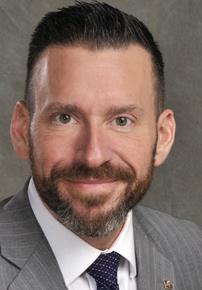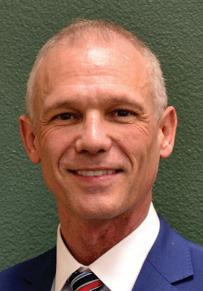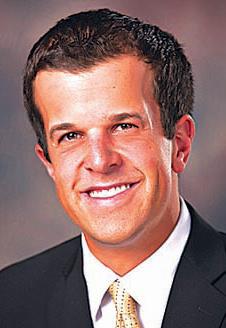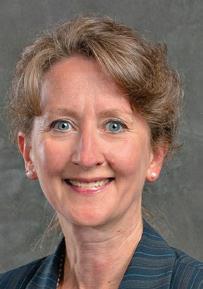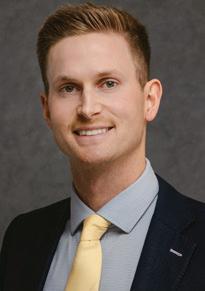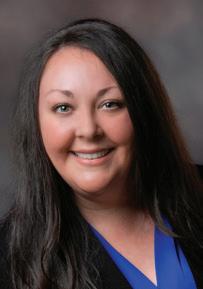SALUTE
November 2022



Family members of Roderick L. Mayer, a Navy pilot from Lewiston who was shot down over North Vietnam in 1965,
By Kathy Hedberg For SaluteIt’s been 20 years since the U.S. government’s Joint Task Force as signed to search and recover miss ing service members from Vietnam closed the books on a downed Navy pilot from Lewiston. But one family member wants to keep his memory alive in hopes that someday there may be an answer to his disappearance.
Jacqueline Manderscheid, of Boise, a cousin to U.S. Navy Cmdr. Roderick L. Mayer, said she accepts that Mayer probably died when his plane was shot down by anti-aircraft fire on Oct. 17, 1965, over North Vietnam.

“He’s still considered missing and unaccounted for,” Manderscheid said during a recent telephone interview with the Lewiston Tribune.
“No one knew and no one still knows. (One witness) said that he heard Rod scream and he told the family, we believed what happened is that Rod’s parachute didn’t deploy correctly and he probably died.
“But someone in Vietnam had to know something and that’s why no one really has closure,” she said. “We just want answers.”
Mayer, who was 26 when he got shot down, was a 1957 graduate of Lewiston High School and a 1961 graduate from the University of Idaho. He was on his 80th mission over North Vietnam when his F4 Phantom jet was shot down. Both he and his radio intercept officer, David R. Wheat, of Duluth, Minn., were able to eject from the plane. Another pilot said he saw Mayer lying on the ground, not moving.
Wheat’s knee was broken when he hit the ground, and he was captured a few hours later. He spent seven years as a prisoner of war, never once getting a hint that his partner might be alive somewhere.
The first search teams went into Vietnam in 1992 as part of a negotiated agreement to recover more than 2,000 MIAs.
Eventually, witnesses were found who told of a very tall American pilot being captured by Vietnamese militia, who took him to a hospital in Lang Son Province that was run by the Chinese.
Mayer was 6 feet, 4 inches tall.
There’s no proof the man the Vietnamese remember was Mayer, but it was about the right time and the right place.
The man was seriously injured, an elderly woman told the investigators, and he died three days later. The Vietnamese buried him in an unmarked grave in a
small prison cemetery with two or three others, all Vietnamese.
The site once was on the edge of a jungle. A few years later, a farmer bought it, leveled the ground and planted his crops. Now the area is ringed with houses, the nearest about 36 feet away. Cultivated tea bushes, pineapple plants, lemon trees and manioc border all sides of the cemetery plot, which still contains two graves, both with stone markers and less than 20 feet from a house, the report says.
Wheat, interviewed in 2000, said on that fateful mission, he and Mayer were supposed to keep their little part of the world safe and sanitized as one bunch of bombers rolled out and a second wave came in.
They were flying “close to the deck,” Wheat said, trying to stay under enemy radar that directed SAM missiles. “That put us in range of even a rifle.”
All it takes is one bullet to penetrate the thin aluminum skin of the aircraft, hit the tube that carries hydraulic fluid for the flight controls and it’s all over. That’s what Wheat thinks happened.
They were flying over an aircraft that had been shot down earlier that day, looking for parachutes and listening for any kind of radio signal from the crew.
“As we were going by, Rod said, ‘We’ve been hit.’” The jet went about 10 degrees right wing down, then did a full rollover. “That’s not a maneuver we would have done in that situation.”
From then on, Mayer was too busy to talk, and Wheat, in the backseat of the Navy aircraft, had no access to any controls or gauges.
“All of this happens in tenths of a second,” Wheat said. His canopy opened
wonder if they’ll ever learn what became of himCOURTESY MRS MAYER Navy Cmdr. Rod Mayer's mother, Elizabeth Mayer, of Clarkston, keeps his memory alive during the annual POW-MIA commemoration at the University of Idaho in 1997.
Courtesy navy.mil
It was the submarine’s final deployment before decommissioning, which is scheduled to begin in 2023 following 37 years of service.
Chicago departed Pearl Harbor March 28, 2022 for a regularly-scheduled deployment, during which the submarine and its crew performed a full spectrum of operations, to include anti-submarine and anti-surface warfare in the Indo-Pacific region.
“I’m extremely proud of not only the Chicago Sailors but the Chicago families and supporters,” said Chicago’s commanding officer, Cmdr. Andrew Kopacz, from Hartford, Wisconsin. “Being gone from


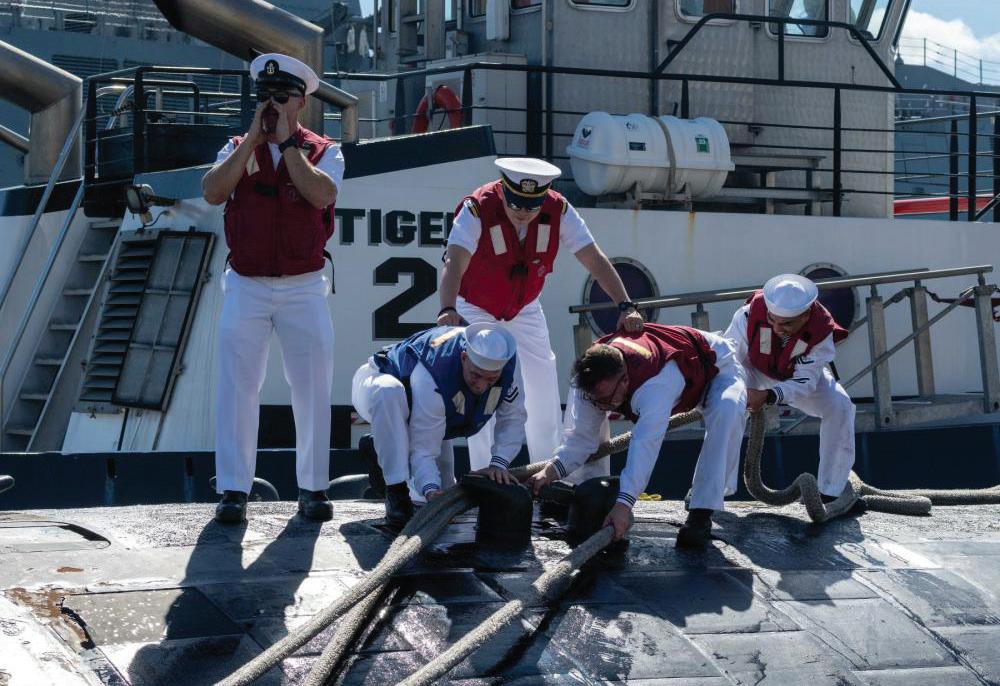

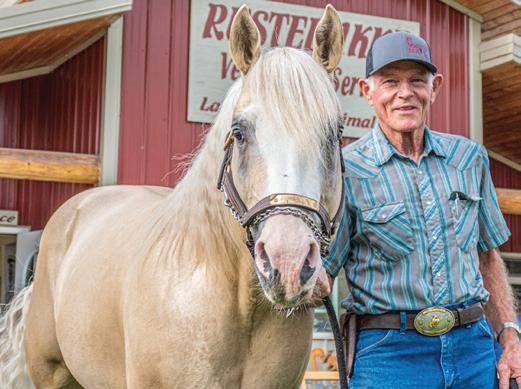

home is a challenge for the crew and we could not have remained focused on the mission without knowing our families were strong back at home. This crew demonstrated the fortitude, resiliency, and enthusiasm that make this country great. We are eager to reunite with our families and enjoy some down time in their company.”

Chicago’s crew trained to be combatready prior to departure and maintained those high standards throughout the deployment.
“The toughness and positive attitude
USS CHICAGO continued on page 30

U.S. Army Soldiers assigned to 1st



Division (3-4 ABCT) maneuver M1A2 Abrams

to
11th
The 3rd Armored Brigade Combat Team, 4th Infantry Division, operationally aligned with 1st Infantry Division, hosted an Abrams Logistical Summit for soldiers from the Polish Land Forces, Oct. 26 to 27, 2022.
By Spc. Kevin Brown Courtesy army.milThe Abrams Logistical Summit, or ALS, introduced Polish Land Forces’ leaders to U.S. Army systems and procedures that support successful M1A2 Abrams main battle tank operations at the company and battalion level. Participating Polish soldiers learned sustainment and logistical support operations for the Abrams.
“The ALS is part two of the Abrams program we started back in early May 2022, which started as a program to show the capabilities and some of the limitations of the Abrams through a live fire exercise and combined arms breach,” said Maj. Robert. C. Churchill, the operations officer assigned to 1st Battalion, 68th Armored Regiment, 3rd Armored Brigade Combat Team, 4th Infantry Division. “What we are doing here at the Abrams Logistics Summit is discussing how to sustain an Abrams formation, its capabilities, limitations and everything logistics.”
On the first day of the ALS, soldiers of 1st Platoon, Bravo Company, 1st Battalion, 12th Cavalry Regiment briefed Polish soldiers on the Abrams systems and answered

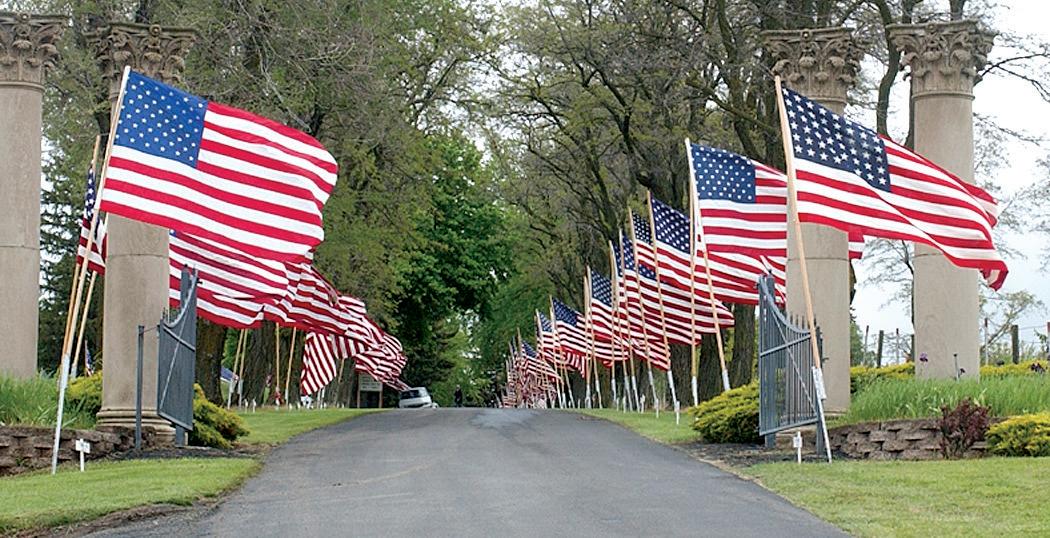 By Lance Cpl. Samantha Rodriguez, 1st Marine Aircraft Wing Courtesy marines.mil
By Lance Cpl. Samantha Rodriguez, 1st Marine Aircraft Wing Courtesy marines.mil
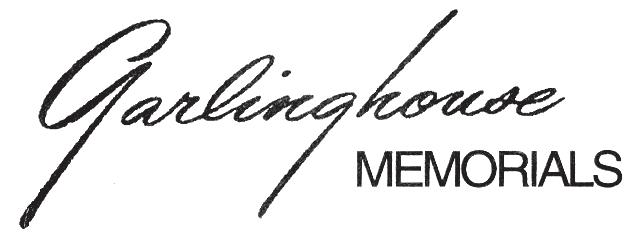

Thompson, an avionics technician with Marine Fighter Attack Squadron (VMFA) 242, proved to be a vital asset to her unit by earning multiple training qualifications, volunteering for innumerable detachments while leading aircraft maintenance, contributing to the transition of F/A-18D Hornet aircraft to the latest 5th Generation stealth F-35B aircraft, promoting safety standards across MCAS Iwakuni by kickstarting the proper disposal of hazardous materials program for F-35B aircraft, and many other tasks responsible for VMFA-242’s successful operational capabilities.
Thompson was raised in a small farm town with a family




The Air Force confirmed Oct. 20 it plans to reveal the B-21 Raider Dec. 2 during an unveiling ceremony hosted and sponsored by the Northrop Grumman Corporation at its production facilities in Palmdale, California.

Courtesy af.mil
The B-21 is a long-range, highly survivable, penetrating strike stealth bomber that will incrementally replace the B-1 and B-2 bombers, becoming the backbone of the U.S. Air Force bomber fleet.
“The unveiling of the B-21 Raider will be a historic moment for our Air Force and the nation,” said Air Force Chief of Staff Gen. CQ Brown, Jr. “We last introduced a new bomber over 30 years ago. As we look to the threats posed by our pacing challenge; we must continue to rapidly modernize. The B-21 Raider will provide formidable combat capability across a range of operations in highly contested environments of
As the only not-for-profit, community owned and operated hospital in the Lewis-Clark Valley, Tri-State Memorial Hospital takes special pride in making sure that the community’s health is our first priority. Over sixty years ago, it all began with one dream to create a hospital that would serve as a memorial that honors all of those who fought and died in the wars. With the support of dedicated community members, the development to build a new, larger hospital that could serve the community and surrounding areas for years to come took shape. On July 17, 1955, Tri-State Memorial Hospital was open to serve our community.



As a living memorial to all veterans, Tri-State Memorial Hospital thanks you and honors you for your bravery, courage, and selflessness. Your legacy will always be a part of who we are and why we began.
www.TriStateHospital.org TriStateMemorialHospital
















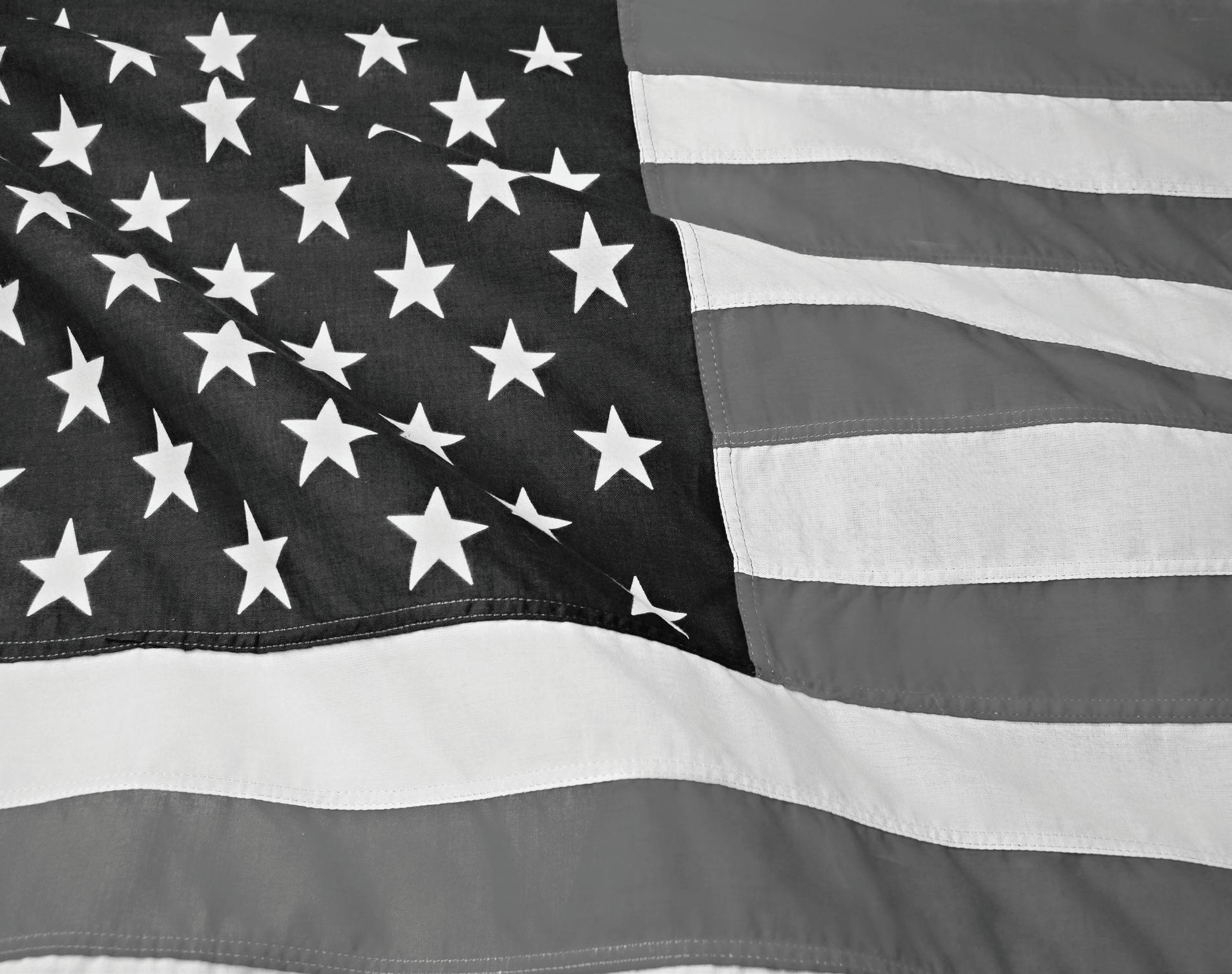


Courtesy spaceforce.mil
Implementing an independent Space Force IDE/SDE program fulfills the aspirational vision set by the Chief of Space Operations to align the USSF with a fresh approach on talent management, as set forth in the Guardian Ideal.
“Our service has been entrusted to protect and defend domains that underpin every other branch’s ability to execute their missions,” said Chief
of Space Operations Gen. John W. “Jay” Raymond. “We are capitalizing on a oncein-a-century opportunity to build and integrate structures, institutions, and processes that prepare our Guardians to take on the unique challenges and opportunities of space operations.”

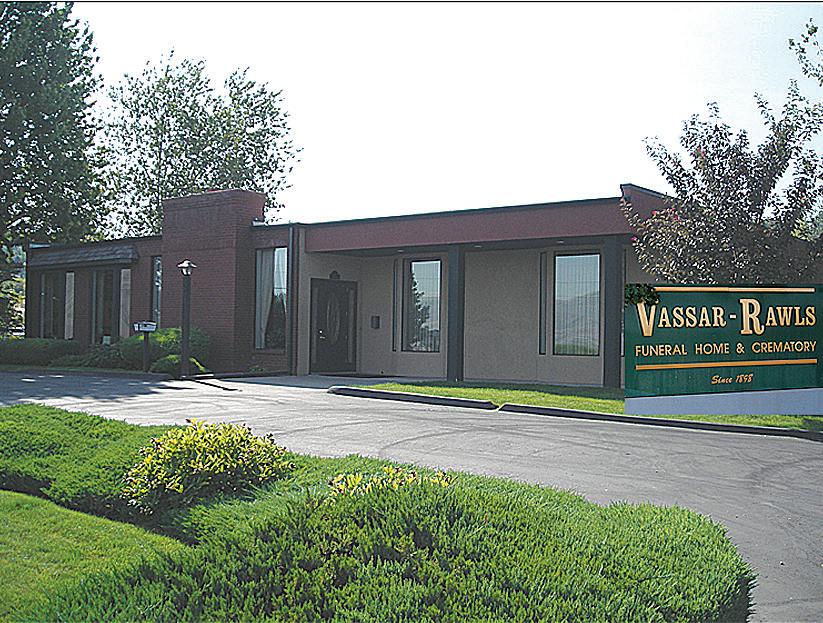

Developing professional military education programs in collaboration with a civilian institution is an

SPACE FORCE continued on page 27
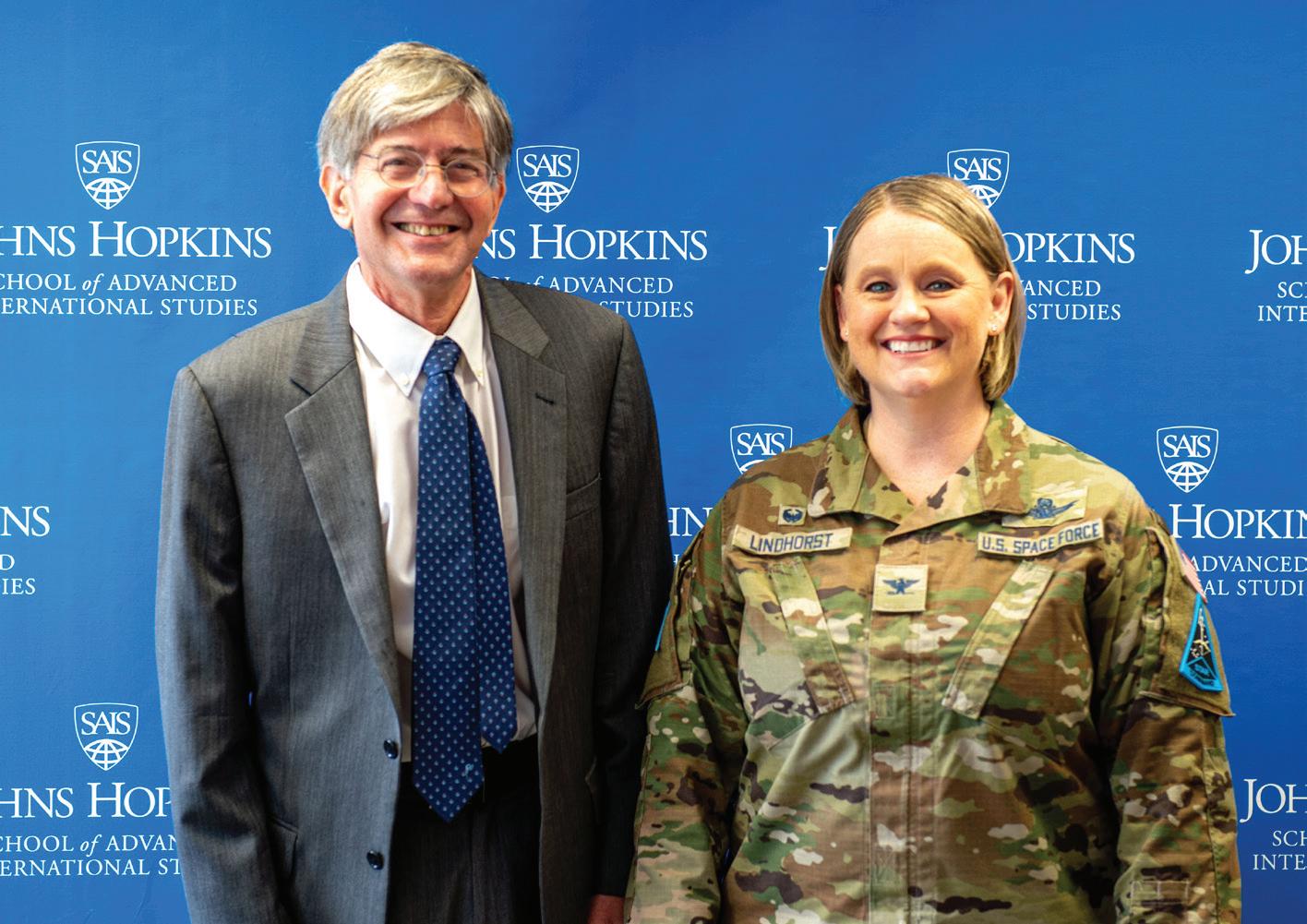




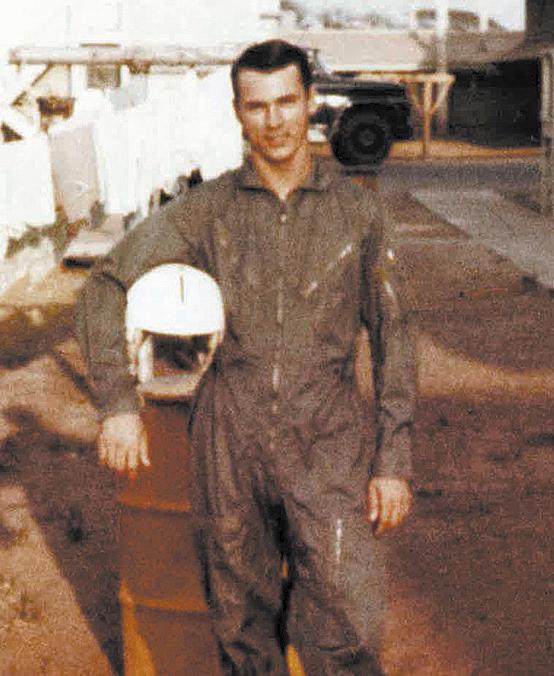






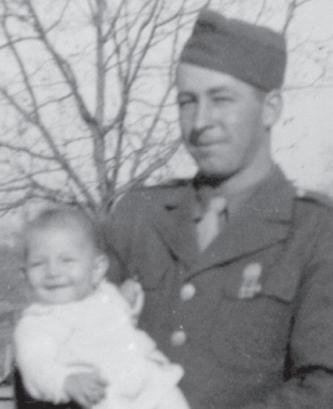
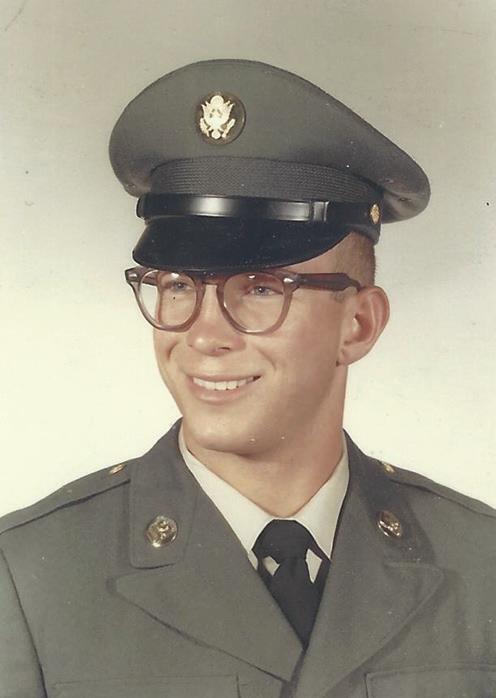




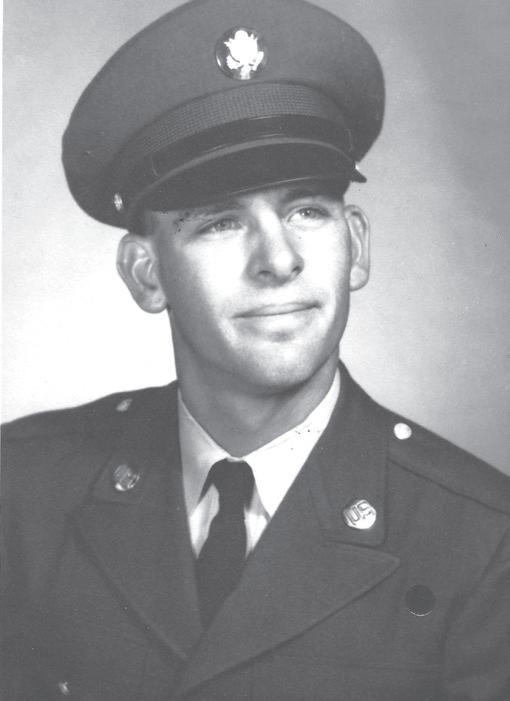
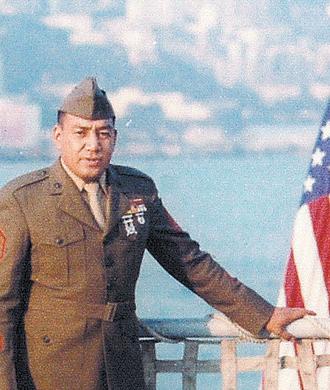


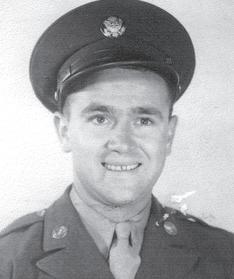




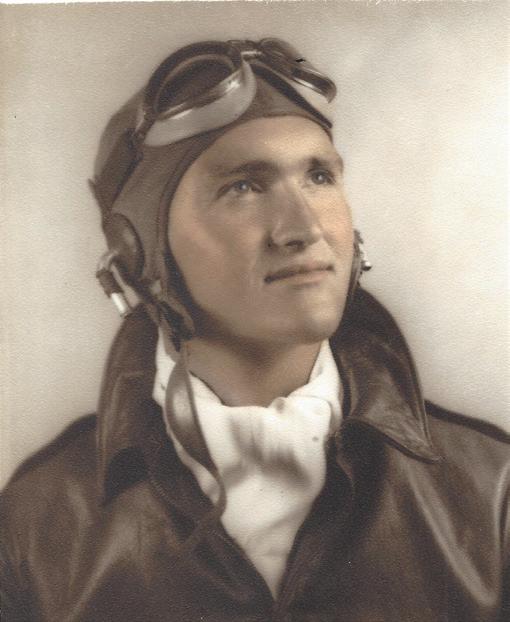
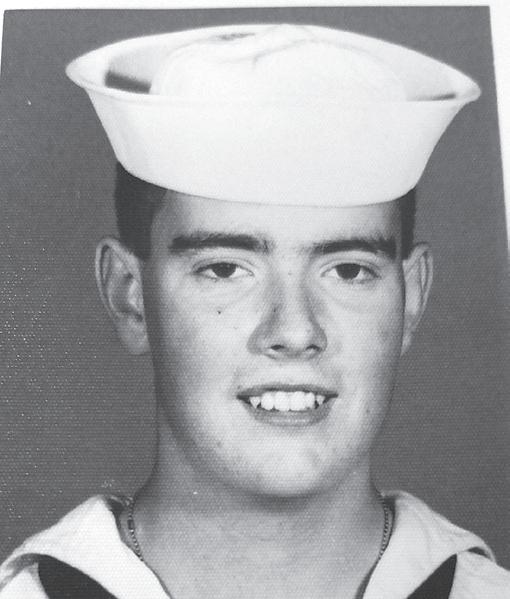











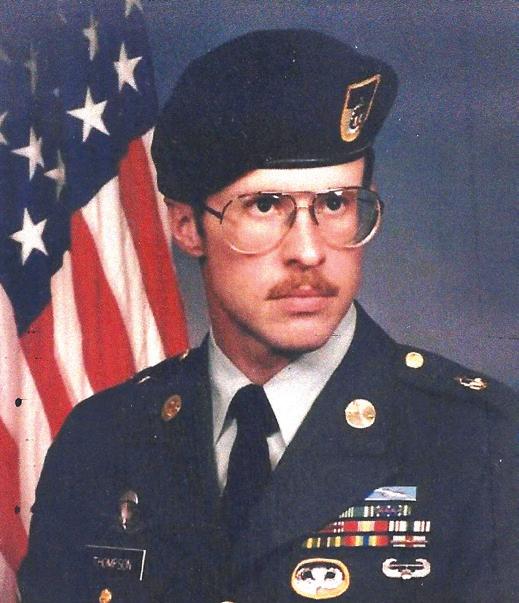






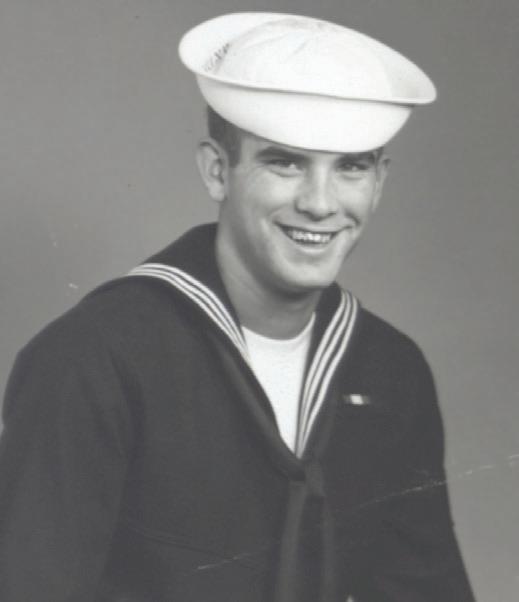

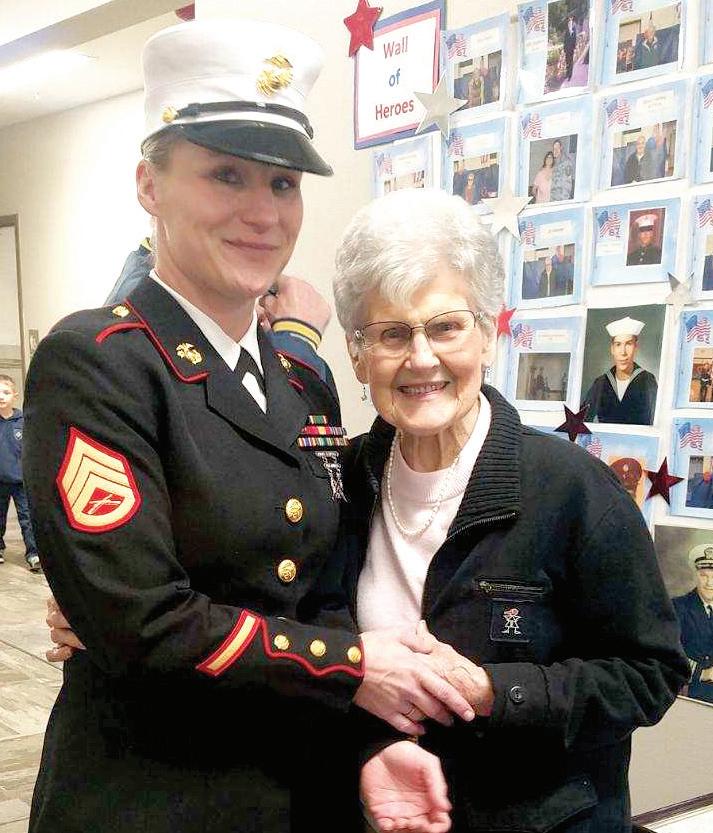



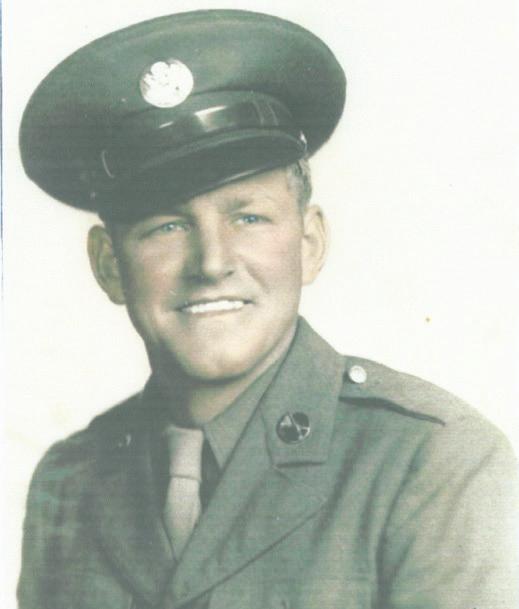












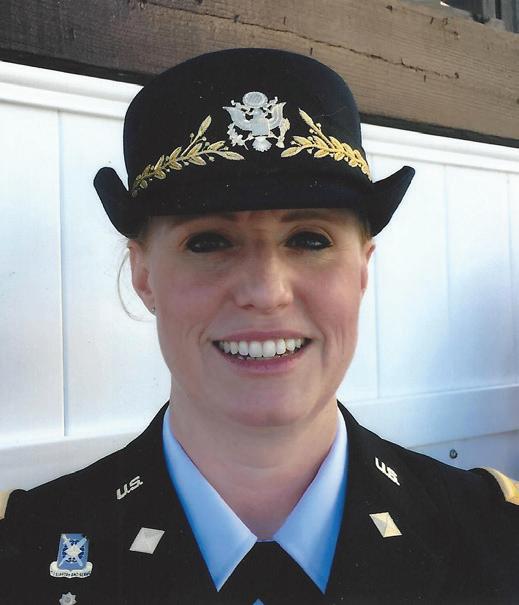
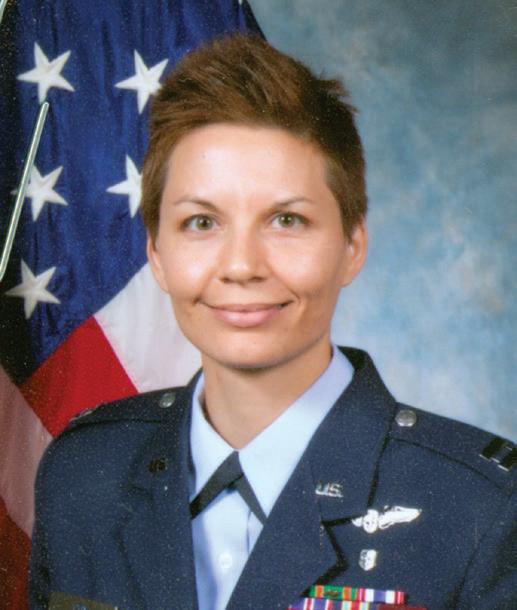
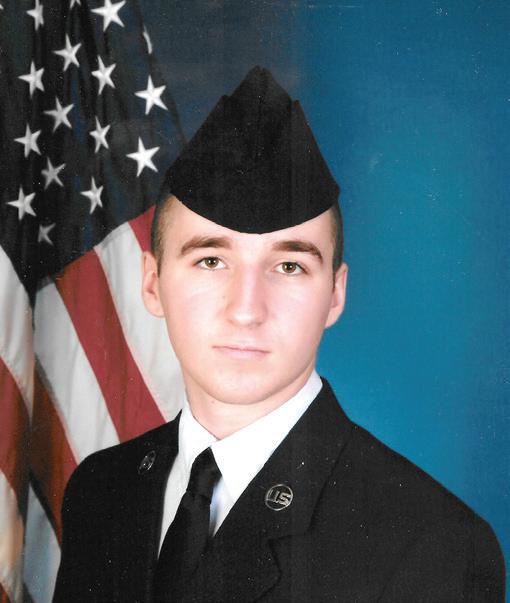

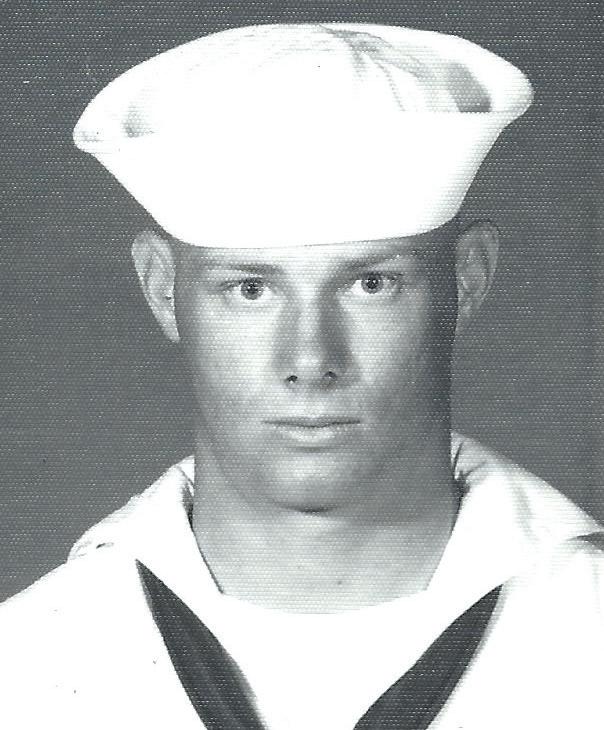









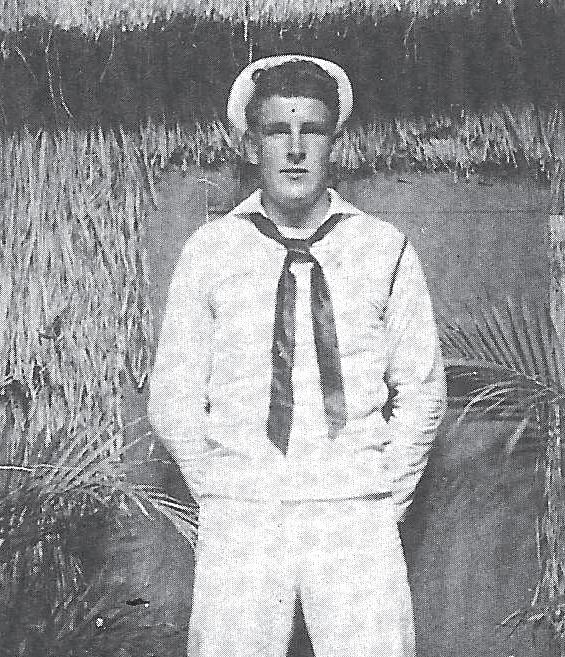
















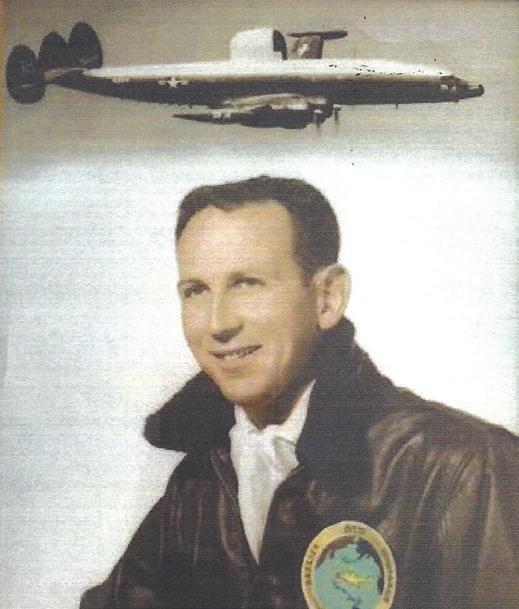




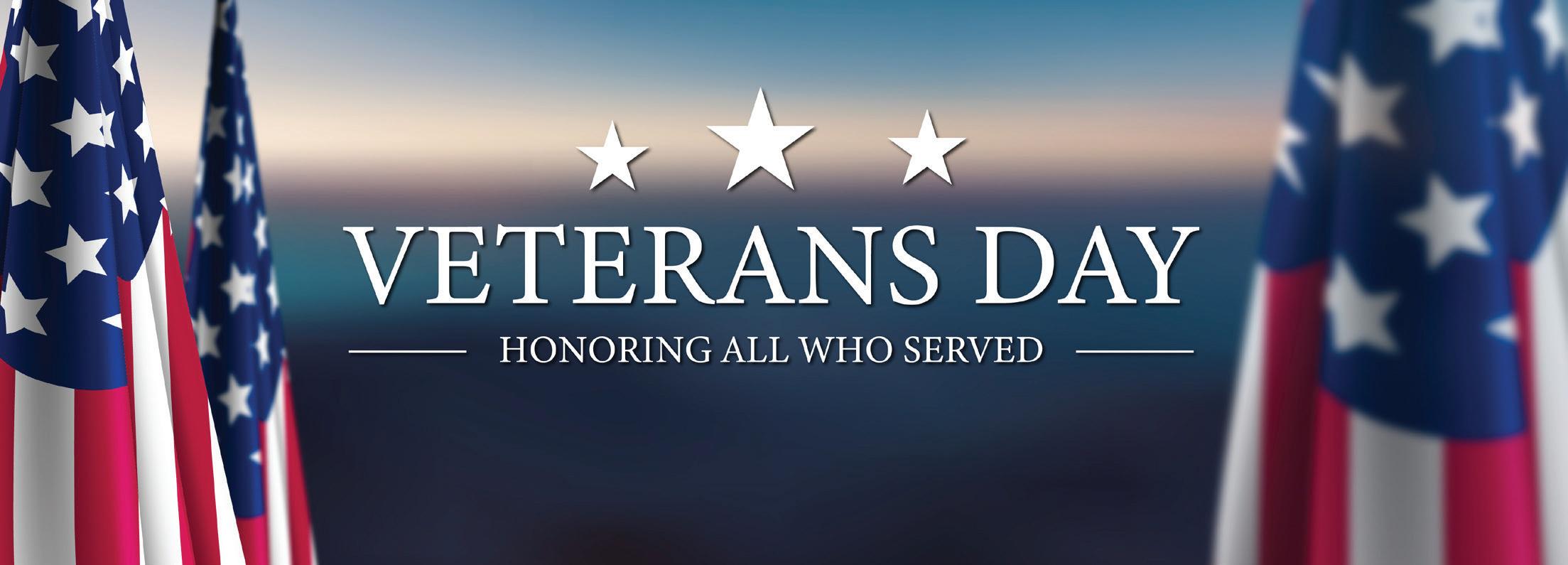


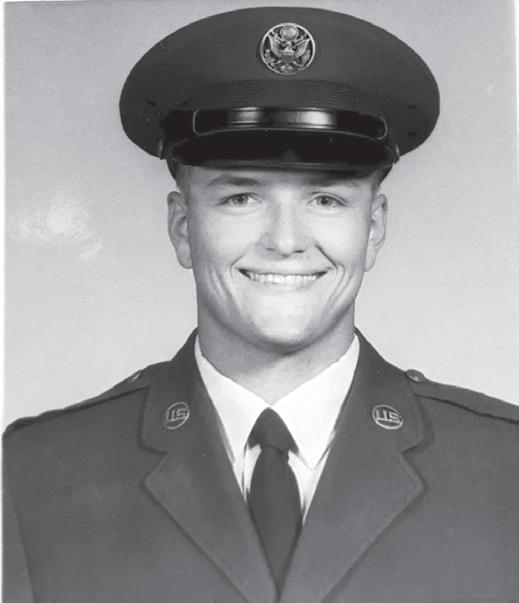
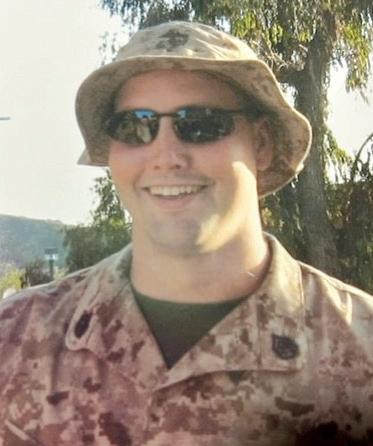
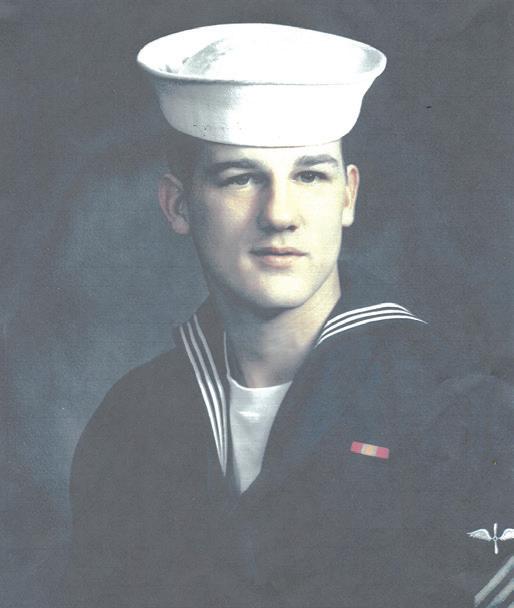
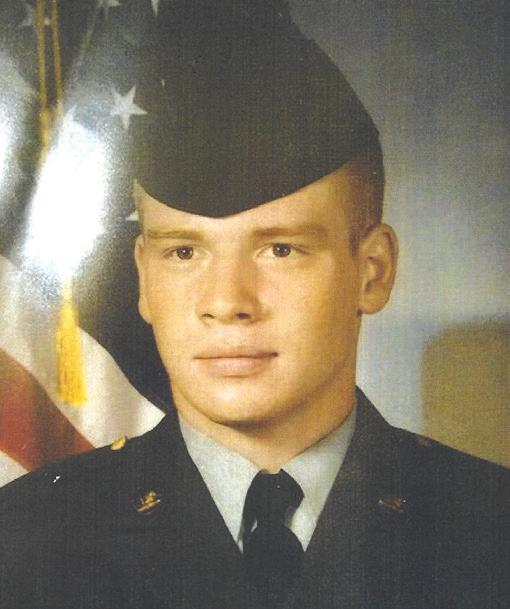

The Bigham family has served with the 139th Airlift Wing since 1953, when Jim Bigham joined the unit with his twin brother, Mort.
By Michael Crane, 139th Airlift Wing Courtesy nationalguard.milJim Bigham’s son would eventually join the unit and attain the highest enlisted rank in the Air Force.
His name is Chief Master Sgt. John Bigham, an aircraft manager assigned to the 139th Aircraft Maintenance Squadron.
Early in his career, John Bigham deployed with his father for Operation Desert Shield. More than two decades later, he would deploy with his own son, now Capt. Riley Coats, who is serving as the wing’s plans officer.
All four of John Bighim’s adult children serve in the 139th Airlift Wing.

The first to join was Coats, who enlisted as a loadmaster and later received his commission. Staff Sgt. Braden Bigham joined next and works in aircrew resource management. Capt. Justin Bigham was the third to join and works for the Advanced Airlift Tactics Training Center. Tech. Sgt. Kacie McCullough, the last to join, works in the 139th Logistics Readiness Squadron.

“I cannot express how proud I am to have served with my family members,” said John Bigham. “The 139th has been such a huge part of my life and my family’s life. It has taken me places both good and bad that most people never get the opportunity to see. It has shown me how an organization cares about one another. I pray that my kids have a career that has been as rewarding as mine.“
John Bigham is retiring at the end of the year with 36 years of service.
“None of this would have been possible without the loving support of my wife, Kelly, who has supported me throughout my career. I have been very lucky and blessed,” he said.
Many other members of John Bigham’s family also served at the 139th. His stepmother, retired Senior Master Sgt. Rosalie Bigham; his stepfather, retired Master Sgt. Norbert “Bun” Bunkowski; his stepbrother, retired Maj. Steve Bunkowski; and his cousin Tech. Sgt. Greg Bigham.


The first Native Americans known to serve in the Coast Guard were members of the Wampanoag Tribe of Gay Head, Martha’s Vineyard, known as the Aquinnah Wampanoag.
By William H. Thiesen, Historian, Coast Guard Atlantic Area

Courtesy mycg.uscg.mil

The Aquinnah Wampanoag have been considered by some the most patriotic and self-sacrificing members in the history of the Coast Guard.
In the early 1800s, Ebenezer Skiff, the White lighthouse keeper at Gay Head Lighthouse, hired members of the Aquinnah Wampanoag to support lighthouse maintenance and operations. In an 1815 letter to his superiors,

the ground forces that protect the United States. Members of the Army are trained to defeat enemy ground forces and to seize and control enemy lands and resources. Army also are trained to control and interact with the general population in countries where members are stationed.
the country and its residents. The Navy works alongside American allies and partners to keep the seas open and free.
Veterans Day is observed annually every November 11 and honors the service of all U.S. military veterans. The day should not be confused with Memorial Day, which is celebrated each year in May and honors all military personnel who have died in service.

Veterans Day is a great time for anyone to learn more about the various branches of the U.S. military.
The U.S. Department of Defense notes that the Army is the largest and oldest service in the country's military. The Army provides
It might surprise some to learn that the Marine Corps. is a component of the Department of the Navy. That's one reason why maintains amphibious and ground units for contingency and combat operations. The Marine Corps. is divided into four groups: the operating forces that fight; the headquarters for leadership; the supporting establishment that provides logistical support; and the Marine Corps. Reserve.
The Navy protects America at sea. Despite its massive land mass, the United States is a maritime nation, which underscores how important a strong Navy is to the safety of
The Air Force has five core missions: air superiority; global strike; rapid global mobility; intelligence, surveillance and reconnaissance; and command and control. The Air Force defends the country and its residents in air, space and cyberspace and is capable of delivering forces anywhere in the world within hours.
The existence of the Space Force may come as a surprise to many Americans. Organized under the Department of the Air Force and established in 2019, this branch of the military organizes, trains and equips space forces in order to protect the interest of America and its allies in space.


During peacetime, the Coast Guard is part
of the Department of Homeland Security. In times of war, it operates under the Navy. The Coast Guard provides law and maritime safety enforcement as well as environmental protection. In addition to promoting national security, border security and economic prosperity in the maritime environment, the Coast Guard saves those in peril on the sea.
The National Guard is comprised of the Army National Guard and the Air National Guard. The National Guard has a diverse array of responsibilities that range from supporting combat missions to responding during domestic emergencies to assisting in humanitarian efforts and more.
The U.S. military is made up various branches, each with its own unique missions and responsibilities. Veterans Day marks the perfect occasion to celebrate the many individuals who have served and continue to serve in the U.S. military.
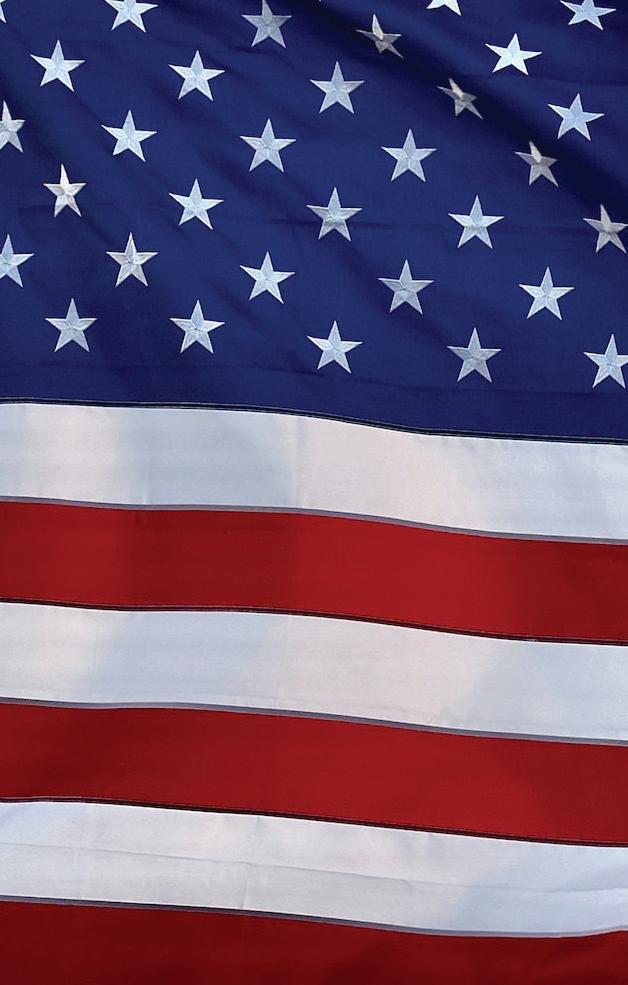















Veterans Day is celebrated annually on November 11 in honor of the millions of individuals across the United States who are military veterans. The day coincides with holidays such as Armistice Day and Remembrance Day, which are celebrated in other countries and also honor military veterans. There’s no denying that veterans need the support of the people whose freedoms they protect. According to a 2021 study from researchers at Brown University’s Watson Institute for International and Public Affairs, the percentage of veterans with disabilities is significantly higher among post-9/11 veterans (40 percent) than it was with veterans from previous eras (25 percent for Gulf War I veterans and 13 percent for



According to Charity Navigator, Americans donate more than $2.5 billion annually to charities with missions dedicated to the military.



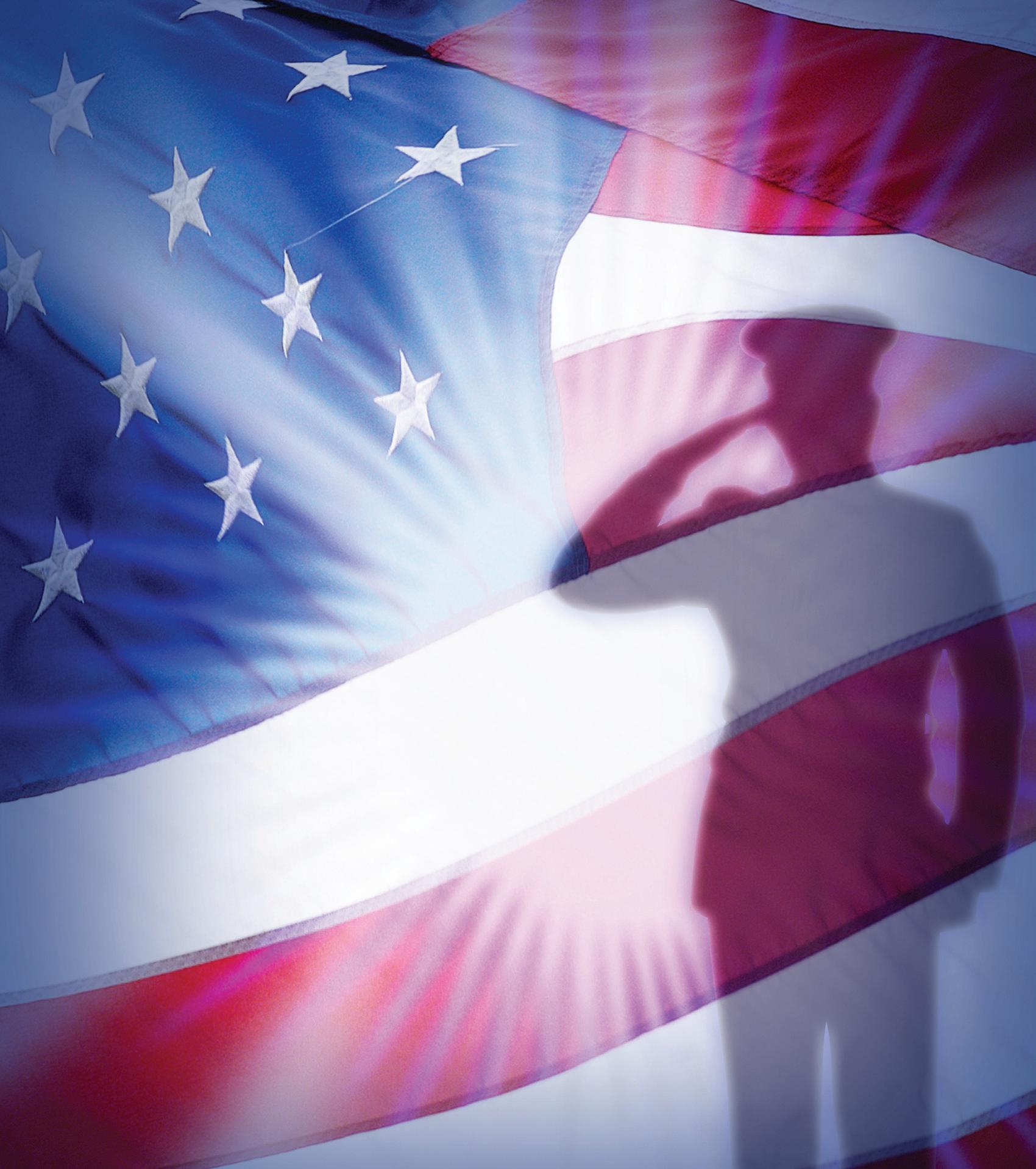
Individuals who want to donate to a charitable organization with a military-related mission may not know where to start, and that can be daunting given the number of organizations that fit that criteria. Charity Navigator indicates there are more than 40,000 American charities with military-related missions, which underscores how difficult it can be to find one to support. Thankfully, Charity Navigator, which has provided donors with free access to data, tools and resources to guide their philanthropic decision-making since 2001, has curated a list of highly rated organizations that provide a variety of services to military members and their families. The following is a brief rundown of that list that can serve as a solid foundation for prospective donors. The full list can be found at charitynavigator.org.
CHARITIES continued on page 22
The support Americans have for their armed forces is evident in how much they donate each year to charities with military-related missions.
· Air Warrior Courage Foundation (airwarriorcourage.org)
· DAV (Disabled American Veterans) Charitable Service Trust (cst.dav.org)


· Fisher House Foundation (fisherhouse.org)
· Higher Ground (highergroundusa.org)


· Homes for Our Troops (hfotusa.org)

· K9s for Warriors (k9sforwarriors.org)
· Operation Second Chance (operationsecondchance.org)


· Wounded Warrior Project (woundedwarriorproject.org)
· Yellow Ribbon Fund (yellowribbonfund.org)
· AMVETS National Service Foundation (amvetsnsf.org)
· Hire Heroes USA (hireheroesusa.org)

· Honor Flight Network (honorflight.org)
· Iraq and Afghanistan Veterans of America (iava.org)

· Operation Gratitude (operationgratitude.com)

· Operation Healing Forces (operationhealingforces.org)
· Soldiers’ Angels (soldiersangels.org)

· The Mission Continues (missioncontinues.org)

· Army Emergency Relief (armyemergencyrelief.org)
· Blue Star Families (bluestarfam.org)
· Children of Fallen Patriots Foundation (fallenpatriots.org)
· Folds of Honor (foldsofhonor.org)
Operation Homefront (operationhomefront.org)
Our Military Kinds (ourmilitarykids.org)
Travis Manion Foundation (travismanion.org)
VFW National Home for Children (vfwnationalhome.org)
veterans of previous wars). Veterans can benefit from support legislated by elected officials in Washington, D.C., but there’s also many things ordinary citizens can do to show how much they appreciate the sacrifices veterans and their families have made and will make in the years to come.
The United States Census Bureau reports that more than one-third of the nearly 3.8 million men and women who have served in the U.S. Armed Forces since September 2001 have a service-connected disability. Many of these individuals are fighting to overcome physical injuries sustained while on active duty. Individuals who want to show their support for veterans can contact their local VA facility to arrange a visit to wounded veterans. Such visits can lift veterans’ spirits and reassure them that their sacrifices are both acknowledged and appreciated.
Though it might seem like a nobrainer, legislation to support veterans often faces an uphill battle to get passed.
By supporting legislation that ensures veterans get the support they need, individuals can send a message to veterans that they haven’t been forgotten and that the very democratic principles they fought to protect are alive and well. Citizens can write letters to their elected officials, urging them to support veteranfriendly legislation, and raise awareness of bills and laws through social media.
Data from the U.S. Department of Housing and Urban Development estimates that approximately 40,000 veterans are homeless on any given night. But that figure doesn’t tell the whole story, as the National Coalition for Homeless Veterans notes that, over the course of a year, roughly twice that many veterans experience homelessness. The NCHV believes that programs to assist homeless veterans should focus on helping them reach a point where they can obtain and sustain gainful employment. In addition, the NCHV feels that the most effective programs are community-based, nonprofit, “veterans helping veterans” groups. Individuals can offer their support
to such groups through financial donations or other means so they can continue to ensure no veteran sleeps on the street.
Veterans Day is a time to show veterans that their service and sacrifices are not taken for granted. Visiting wounded
veterans and supporting efforts to ensure veterans get what they need to live full, healthy and happy lives is a great way to send the message that veterans are appreciated.


HEROES continued from

page
Skiff reported, “When I hire an Indian to work, I usually give him a dollar per day when the days are long and seventy-five cents a day when the days are short and give him three meals.” It became common for Gay Head keepers to hire Aquinnah Wampanoag members to assist with daily operations and maintenance. These hired assistants were the first Native Americans to serve in a Coast Guard predecessor agency.
Of all events associated with early Native American service, the rescue of the S.S. City of Columbus stands out. The passenger steamer plied East Coast waters from Boston to New York and ran aground half a mile off Gay Head on a bitterly cold and stormy night in January 1884. One hundred passengers and crew drowned within 20 minutes of the grounding.
Aquinnah Wampanoag volunteers assembled on shor. Vintage photograph of all the local men who volunteered in the City of Columbus rescue. Samuel Anthony stands sixth from right behind the boat, looking at the camera. (Courtesy of the Martha’s Vineyard Museum)e to brave bitterly cold temperatures and heavy seas to save any survivors. These Native American heroes manned two rescue

boats, a lifeboat and a larger surfboat, provided by the Massachusetts Humane Society. After launching into the waves, the lifeboat was crushed against the rocks and lost, but the stunned Aquinnah Wampanoag crew survived. Meanwhile, their brethren lifesavers launched the surfboat, which capsized in the heavy surf. In the bitter cold, the waterlogged volunteers drifted ashore and tried again to reach the last survivors hanging from the masts of the submergedAquinnah Wampanoag men stand with the demolished surfboat that had been launched into the breakers during the City of Columbus rescue (Courtesy of the Martha’s Vineyard Museum) steamer. Of these dramatic events, Aquinnah Wampanoag lifesaver Samuel Anthony later recalled, “We were on our trip to save lives or lose our own in trying.” The intrepid Native American crew righted the surfboat, retrieved seven survivors from the City of Columbus and began the return trip. Again, the surfboat overturned, however, the crew and victims got to shore safely and survived.
For imperiling their own liveOriginal Members of the Gay Head Lifesaving Station, including Surfman Samuel Anthony (Courtesy of the Martha’s Vineyard Museum) s to rescue total strangers from the wrecked City of Columbus, the Aquinnah Wampanoag
men became nationally famous. Members of the all-volunteer force received high praise, medals and cash awards from the Massachusetts Humane Society. In reporting the story, the press wrote that the Native American men and their wives, who aided the victims ashore, were “deserving of all praise and the fund for their benefit and encouragement should assume large proportions. Without any expectations of reward, they periled their lives for others.”

To our men and women in uniform, past, present, and future, Thank you. 420 Rowe Street, Moscow 208-882-4576 www.aspenparkofcascadia.com Moscow|Kendrick|Plummer|Potlatch Home Loans|Personal Loans|Business Loans|Credit Cards Join us in honoring those who fought for our freedom
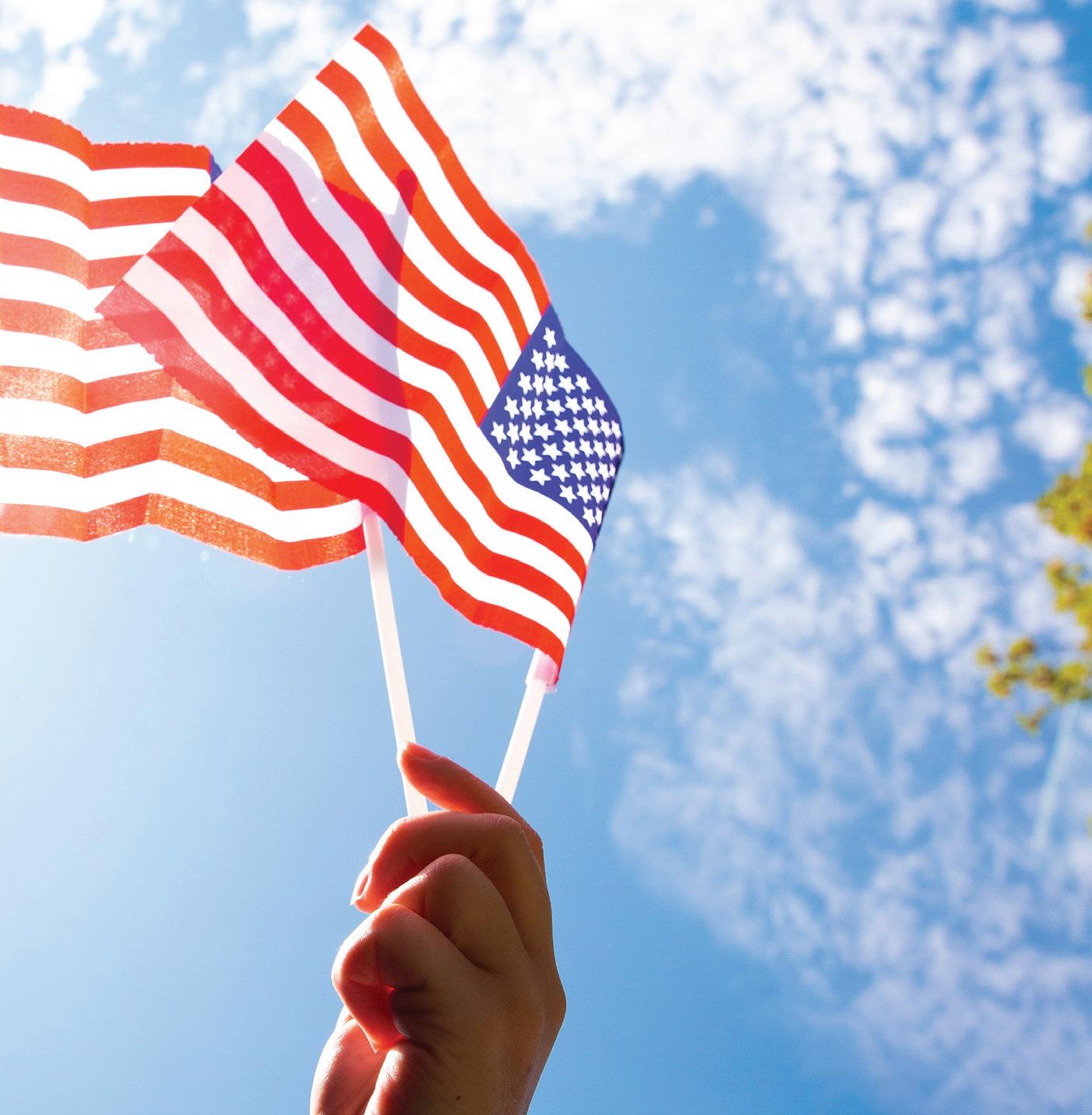

a federal installation. Standing 12 feet tall and weighing several tons, Gay Head’s firstorder lens was immense, incorporating more than 1,000 glass prisms. As assistant keeper, Vanderhoop’s duties included climbing the narrow spiral staircase to the lantern room and lighting the lamp at night and on lowvisibility days. In the mornings, he ascended the stairs to extinguish the lamp and clean it. He was also responsible for polishing the light’s brass appurtenances, refueling the lens and resetting its lantern wicks in preparation for the next illumination.

In 1895, the U.SCity of Columbus rescue hero and U.S. Lighthouse Service trailblazer Leonard Vanderhoop (Courtesy of the Martha’s Vineyard Museum). Life-Saving Service established a station at Gay Head with a White keeper and a crew of Aquinnah Wampanoag surfmen. One of these surfmen, 35-year-old Samuel J. Anthony, had served in the City of Columbus rescue. In January 1898, exactly 14 years after the City of Columbus disaster, the Gay Head area was hit hard by the infamous “Portland Gale,” which put ships ashore allGay Head Lifesaving Station’s crewmembers stand in dress whites in front of the brand-new station building, including
an attached watchtower (Courtesy of the Martha’s Vineyard Museum) around Martha’s Vineyard. Two schooners grounded off Gay Head, but every time the station crew tried to launch their surfboat, heavy surf would swamp it and catapult it back at them. After more than a day spent attempting to launch, the crew managed to overcome the heavy seas and save six frostbitten crewmembers from one schooner, while the other schooner was lost with all hands except one.
During World War I, the Aquinnah Wampanoag men of Martha’s Vineyard became nationally famous once again. The Native American community at Gay Head was honored by the State of Massachusetts as the most patriotic town in New England. Gay Head had more men serve their country by percentage of their population than any other settlement in the region. Among the 23 Aquinnah Wampanoag men who served, six were current or former members of the Coast Guard, including City of ColumbuA vintage photo of the Gay Head Lighthouse circa 1913 (Courtesy of Wikipedia)s hero Samuel Anthony, who retired in 1920 at almost 60 years of age. Between his years as a volunteer lifesaver with the Massachusetts Humane Society and as a professional lifesaver with the U.S. Life-Saving Service and the Coast Guard,

Anthony’s career had spanned more than 35 years.
Locally famous lighthouse keeper Charles W. Vanderhoop, of the Aquinnah Wampanoag community, who oversaw lighthouses on Nantucket and Martha’s Vineyard. Vanderhoop is seated in front of a few of the thousands of tourists who visited Gay Head Light every year. (Courtesy of Ms. Martha Lee)In 1919, the U.S. Navy appointed Aquinnah Wampanoag member Charles W. Vanderhoop, who was Leonard Vanderhoop’s cousin, as the principal keeper of the Sankaty Head Lighthouse on nearby Nantucket Island. He was the first Native American to oversee a federal installation. The next year, the U.S. Lighthouse Service appointed him principal keeper of Gay Head Lighthouse, naming Aquinnah Wampanoag member Max Attaquin assistant keeper. This brought national attention yet again to the Aquinnah Wampanoag men of Gay Head.
By the early 1930s, Vanderhoop and Attaquin had kept the light through many hurricanes and nor’easters and provided local shipping with years of faithful service. Over the course of their time as keepers, Vanderhoop and Attaquin provided tours for approximately 300,000 visitors,
including men, women and children, as well as celebrities such as President CA chart of southern New England showing the location of Gay Head, now known as Aquinnah, Martha’s Vineyard (Courtesy of Wikipedia) alvin Coolidge. However, years of climbing the tower and tending the light took their toll on Vanderhoop, and heA bronze plaque dedicated to the patriotic Aquinnah Wampanoag men who served their country during World War I. Pictured in front are June Manning and Durwood Vanderhoop, whose grandfathers’ names are inscribed on the plaque. (Courtesy of Mark Lovewell/ Vineyard Gazette) retired on disability in 1933 after 20 years in the service. Faithful to the last, Attaquin also served until 1933, when he left the service. Later in the century, other Aquinnah Wampanoag keepers served at Gay Head Light, including Assistant Keeper Charles W. Vanderhoop, Jr., who became the first Native American son to follow his father as a service member.
Aquinnah Wampanoag members such as Anthony, the Vanderhoops, and Attaquin faithfully served in the Coast Guard and its predecessor services. Their dedication to the nation embodied the Coast Guard’s core values of “Honor, Respect and Devotion to Duty.”

innovative approach to deliver the best of both worlds to the officer development experience.

“Our talent development processes must be uniquely designed to allow our Guardians to thrive and reach their full potential," said Katharine Kelley, Deputy Chief of Space Operations for Human Capital. "To develop superior space capabilities and deliver warfighting solutions, we must deliberately grow our Guardians to think, act, and fight strategically with an understanding of how they fit into the larger ecosystem of the space community."
By partnering with Johns Hopkins SAIS on IDE/SDE, the service can tailor curriculum to meet the unique and evolving needs of space operations by capitalizing on the multidisciplinary, strategy-focused course offerings in international security, ethics and leadership, international public policy and more at the institution.
“We are very excited about this partnership with the Space Force,” said James B. Steinberg, dean of Johns Hopkins SAIS. “Our institution is deeply
committed to preparing leaders to meet the complex challenges of the 21st century, and participants in this program will be fully involved in our SAIS community, working closely with our distinguished faculty and other students. It is also wonderful that the first Space Force cohort—together with other service members and civilians— will join the SAIS community next fall in our state-of-the-art new building here in Washington DC, 555 Pennsylvania Ave. We look forward to welcoming the Guardians and their fellow program participants.”
Independent PME also contributes to a unique Space Force culture while preparing Guardians to undertake the specific challenges inherent to the space domain.
“Developing Guardians to compete and prevail in space and cyberspace requires a Guardian-focused professional military education experience,” said Maj Gen Shawn Bratton, Space Training and Readiness Command commander. “The space domain requires a unique education for space-minded professionals; partnering with Johns Hopkins SAIS enables Guardians greater

access to cutting-edge STEM electives, laboratory research opportunities, and a wider range of commercial space sector program opportunities in the Washington, D.C.-area.”
Partnering with Johns Hopkins SAIS has the added benefit of being located in the heart of Washington D.C., allowing for enhanced working relationships, networking opportunities that will allow IDE/SDE students to continue building school projects after graduation, and the ability to more easily transition to and from assignments within the NCR.
Locating the program in the National Capital Region allows students and their families fewer PCS moves, adding family stability, increasing quality of life, and providing a seamless transition to their follow-on assignment.
The USSF will determine the approach and timing for transitioning select faculty from Air University at Maxwell Air Force Base to Johns Hopkins SAIS by 2023. Like other sister service Professional Military Education programs, this institution will have joint PME accreditation and be open to select civilians.
www.elitehhh.com (509) 758-2568

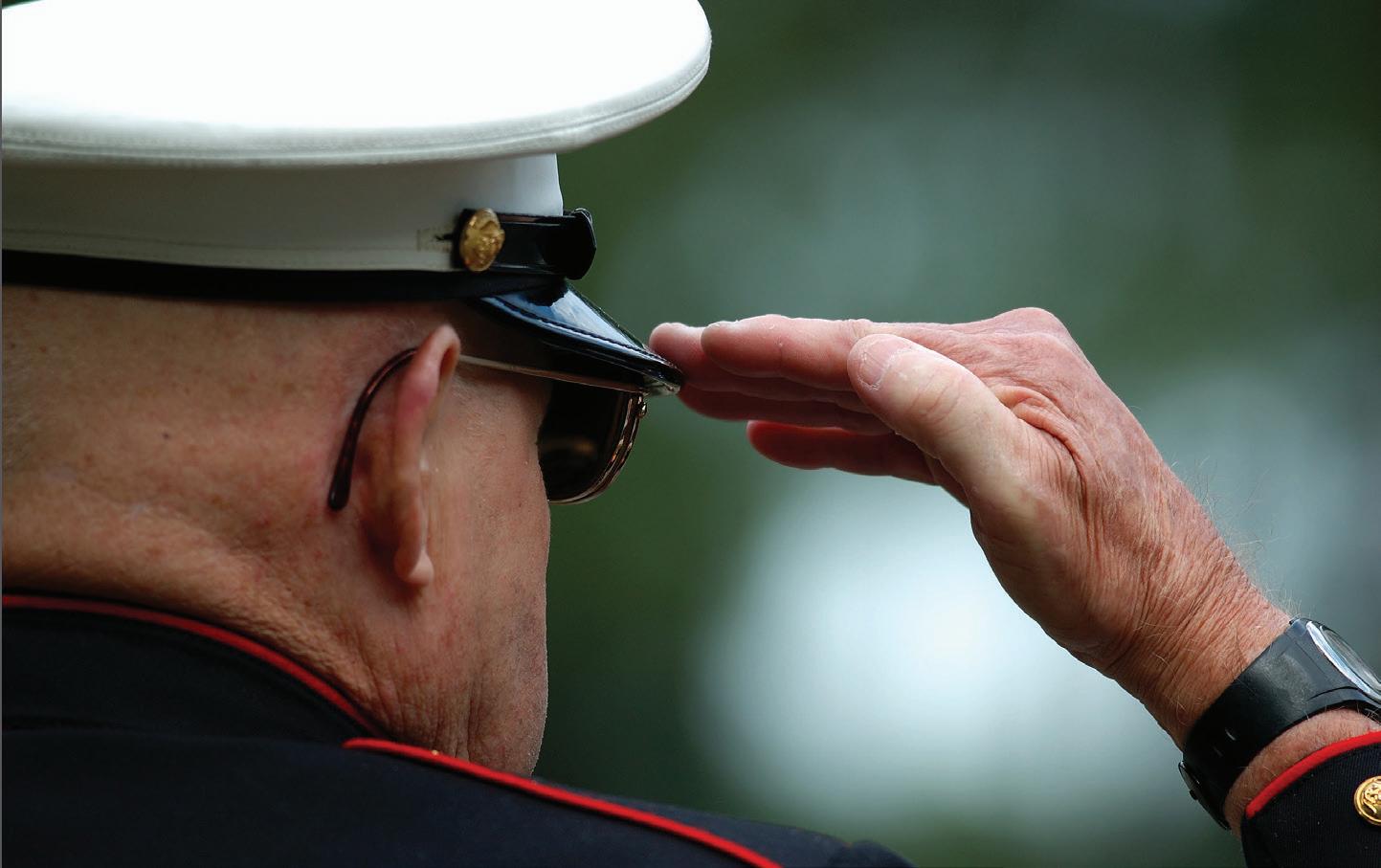


Veterans Day, formerly known as Armistice Day, was originally set as a U.S. legal holiday to honor the end of World War I, which officially took place on November 11, 1918. In legislation that was passed in 1938, November 11 was “dedicated to the cause of world peace and to be hereafter celebrated and known as ‘Armistice Day.’” As such, this new legal holiday honored World War I veterans.
In 1954, after having been through both World War II and the Korean War, the 83rd U.S. Congress -- at the urging of the veterans service organizations -- amended the Act of 1938 by striking out the word “Armistice” and inserting the word “Veterans.” With the approval of this legislation on June 1, 1954, Nov. 11 became a day to honor American veterans of all wars.
entrenched in the U.S. Marine Corps. She was a product of dual military parents, especially with her father serving 28 years and her brother also bearing the title of a U.S. Marine.
“I wanted to build a more sustainable and stable lifestyle,” said Thompson. “I saw my parents be successful doing it, so I wanted it too.”
After attending college for three years, she made the decision to enlist in the Marine Corps in 2017.
Growing up in Croswell, Mi., Thompson credits her athletic background and playing college volleyball at the Grand Valley State University for shaping one of the hallmarks of being a quality Marine.
“Being an athlete helped me develop my small unit leadership,” said Thompson.
She related playing sports with her teammates in high school and college to guiding fellow Marines. In her experience, they both required being a team player, leading by example, and having a good attitude to accomplish an overall goal; whether it was during

a match or on the flight line. This small unit leadership is reflected in Thompson’s work ethic, and influence over 60 Marines she was in charge of during her time. Her influence on the Marines around her paved way for her consistent selection for Marine of the Quarter, Noncommissioned Officer of the Quarter, Marine Aircraft Group 12 NCO of the Year, and placed second in 1st Marine Aircraft Wing NCO of the Year.
“She sets the example in everything she does,” said Staff Sgt. Gideon Bennett, an F-35B aircraft avionics technician, and Thompson’s immediate supervisor for the past four years. “She has an unparalleled level of skill, puts
max effort into each task she does, while effectively mentoring and developing those under her charge.”
Since her arrival to MCAS Iwakuni in 2018, Thompson has been coined the ‘go to’ Marine at her unit, because of her relentless drive to outperform her peers, and lead by example.

Thompson notes her various billets and progression has, “made a big impact on my career and learning progression.”
While Thompson’s squadron indulged in her skillset, she thrived while supporting exercises and operations across Japan and the United States. At Kadena Air Base, Okinawa, she served as
an Off-Board Missions chief where her responsibilities encompassed managing the intricate data systems, mission planning, and all around F-35B aircraft software that allow pilots to fly. Under this role, she directly contributed to VMFA-242’s mission success by leading the flight schedule without any significant impacts, resulting in the flying of all scheduled flights.
As an OMS chief, she created a manual, which focused on the readiness and training for OMS operations for her junior Marines and VMFA-242’s pilots. In her free time, she balances her dedication to the Marine Corps with her personal ambitions through pursuing her bachelor’s degree and volunteering within the local Japanese community.
“I wanted to make myself the best Marine I could be, and then potentially be able to teach other Marines and help other Marines along the way,” said Thompson.
Thompson’s continuous drive to improve, and selection for the Navy and Marine Corps Commendation Medal sheds light on the Marine Corps standard for the model Marine to simply always be in the pursuit of excellence.
questions on general maintenance and operations. Polish soldiers were able to use the Abrams alongside U.S. soldiers to get hands on guidance.
“There are a lot of interests and opportunities to share with our allies on how we work and operate the Abrams,” said Maj. Gretchen Gaskins, the Iron Brigade support operations officer, assigned to the 3rd Armored Brigade Combat Team, 4th Infantry Division. “The more opportunities our Polish partners get to work with the Abrams, the more they get to find out its quirks and personality.”
Day two of the ALS consisted of classroom instruction in which Polish soldiers learned about officer and noncommission officer development, crew management, training management, operational facilities and maintenance.
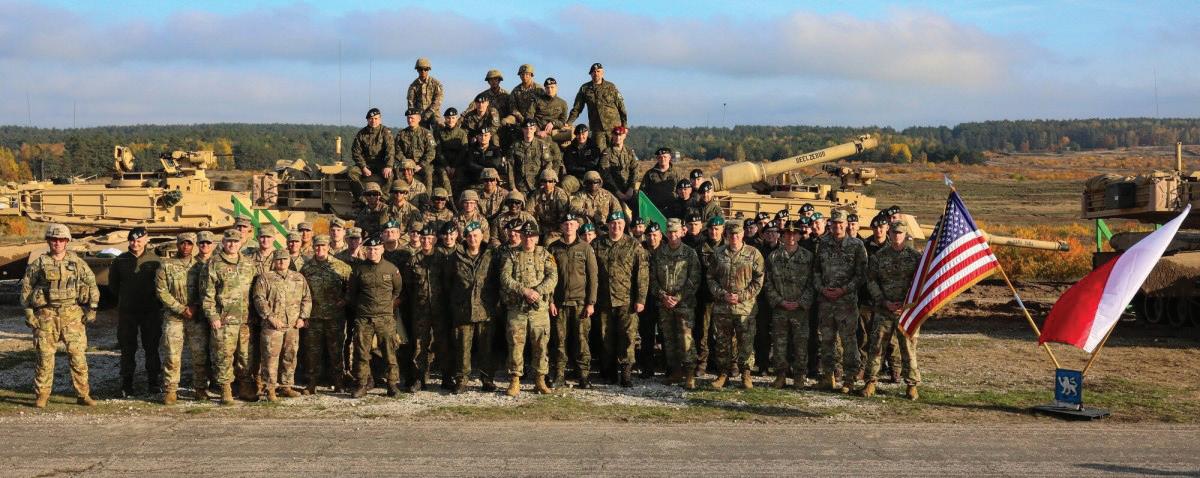
“The purpose of this course wasn’t to teach you [Polish] how we [U.S.] do it, but to get you thinking about how to support your newly integrated weapon system,” said Brig. Gen. Michael Simmering, 1st Infantry Division deputy commanding general of operations.
Day two ended with a live demonstration of how an Abrams tank platoon conducts tank vehicle recovery, a dedicated vehicle recovery and the removal of an Abrams tank power pack. During the tank vehicle recovery, soldiers hooked tow cables from one tank to another tank for towing. The second demonstration was a dedicated vehicle recovery. An M88A2 Heavy Equipment Recovery Combat Utility Lift and Evacuation System (HERCULES) towed a tank using a vehicle tow bar attached by Abrams crew members.
For the last demonstration, soldiers utilized an M88A2 HERCULES to conduct a power pack removal of an Abrams.
Soldiers removed the Abrams back deck, using the HERCULES, exposing the power pack. The crowd was allowed to come forward and examine the method used in each demonstration. The sharing of the mechanical and technical operations of the Abrams and HERCULES with our Polish Allies increases interoperability.
In support of Poland’s purchase of M1A2 SEPv3 Main Battle Tanks, the U.S. Army’s 1st Infantry Division continues to work shoulder-to-shoulder with our Polish allies through the Abrams partnership program to build the capabilities, tactics, sustainment and master gunner skills in the Polish military.


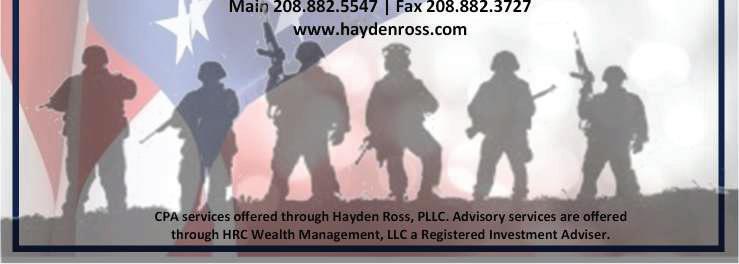



This program complements the Program Executive Office Ground Combat Systems-led Tank Training Academy, which enables U.S. and Polish forces to increase interoperability in support of shared security objectives. The tank
training academy, conducted in Poland, began in late July.
These efforts enable the Polish Land Forces to build operational capability as quickly as possible upon receipt of the tanks purchased through the Foreign Military Sales program.
“Well, it’s all about building the partnership in regards to the NATO allies,” said Churchill. “Doing this builds our allies and ensures our enduring partnership in Poland will continue and only get stronger.”
continued from page 6
Air Force Test Center, Air Force Operational Test and Evaluation Center, and Northrop Grumman. Their work will verify performance and identify areas for improvement for the weapon system.


the future.”

The Department of the Air Force is investing in the aircraft’s long-range strike capability as part of its seven Operational Imperatives as it develops the advanced communications, sensors, and a broad mix of weapons and supporting systems needed to deter our adversaries and prevail in combat. We must invest in long-range strike in a highly contested environment by integrating the B-21 bomber with advanced communications, sensors, and a broad mix of weapons and supporting systems.
After unveiling, the B-21 program will continue its rigorous testing campaign with a combined team of professionals from the


“The B-21 program is a powerful example of America’s long experience with fielding advanced military technology through an innovative, adaptable and efficient defense industrial base,” said Andrew Hunter, assistant secretary of the Air Force for Acquisition, Technology and Logistics. “The Air Force made the decision early in the life of the program to make the flight test aircraft production representative, which is paying dividends as we look towards first flight.”
The B-21 weapon system is manufactured under the Air Force’s contract with Northrop Grumman. It is designed with an open systems architecture, enabling rapid insertion of mature technologies, and allowing the aircraft to remain effective as

displayed by the entire Chicago crew has been extraordinary,” said Master Chief Information Systems Technician (Submarines) Christopher Kyser, from Warner Robins, Georgia, Chicago’s Chief of the Boat. “The work put in by Chicago Sailors to maintain a presence at sea has been impressive. I couldn’t be more proud of the work our Sailors have put in over the last seven months to keep the oldest submarine in the force in top shape during her last deployment. Special thanks to all the families for keeping the home front secure and enabling us to accomplish our primary mission. None of this would be possible without your sacrifice.”

During the deployment, more than 50 Chicago Sailors became fully qualified in submarines, earning their submarine warfare specialist designation dolphins. now, seeing the boys I

and he ejected. He tumbled. His chute flared, and he thinks he had one swing before it caught in the top of a little tree and he hit the ground, feet first, breaking his knee.
“Rod may not have got that one swing,” he said.
He popped the quick release on his chute, intending to pull it down and hide it. Instead, the tree pulled it out of his reach, a sign to anyone in the vicinity that he was there. He yelled for Mayer once, maybe twice, and got no response. He crawled up the hillside, parting the grass ahead, trying to close it behind him. Airplanes flew overhead and he tried to signal them with the backside of a stainless steel compass. “I wanted someone to know someone was alive on the ground.”
A helicopter had been prepositioned on a destroyer offshore. It would be able to come in, make one or two passes for a possible pickup, then would have to leave again.



“By the time it got there, militia was all around me. ... If they had come to hover over me, they would have been shot down and four more crewmen would have been killed or prisoners.”
He watched Vietnamese walk within 6 or 8 feet of his hiding spot. Finally, he saw someone following his path upward. “He looked around the tree where I was, and jumped back, yelling gibberish.”




During his time as a prisoner of war, Wheat said he listened for Mayer’s name to be mentioned among the various other prisoners who found covert ways of communicating despite their confinement.
“I suppose you kept hoping his name might pop up somehow, some way. You’d keep asking around. I’d pretty well made up my mind from what I’d heard and observed that he’d probably died out there.”


Manderscheid said Mayer’s mother, Elizabeth, who died in 2016, never gave up hope that her son might still be alive. Mayer’s father, Joseph, died in 1987. He has one sister, Charlotte, who is 82 and lives in Saunt, Ohio.

Manderscheid has joined a national group of other families whose loved ones are still missing. Although the hope to recover more missing servicemen dwindles as time goes by, every now and then someone does make an identification. Manderscheid said the
group was told that the remains of two more have recently been discovered, bringing the total of those unaccounted for to 1,582.
“My place is to keep Rod’s memory alive,” Manderscheid said. “I’ve been told stories about his dark, curly hair and his ability to do mathematics in his head. He was tapped to be part of NASA but he had an obligation to the government to pay back for his (Reserve Officers Training Corps) and he didn’t make it home. And so we lost someone who would have been very helpful with space exploration.
“It’s a wound that never went away. (His family members) died never knowing that the organization that has sprung up from the families that I’m a part of have never given up hope that one day there will be answers.”
Hedberg may be contacted at khedberg@lmtribune.com.
PILOT ROD MAYER U.S. Navy pilot Rod Mayer, of Lewiston, poses on a F-4B Phantom fighter/bomber at Fairchild AFB at Spokane during a cross-country flight in July 1964. His Phantom aircraft flown off the aircraft carrier U.S.S. Independance was shot down over North Vietnam in October 1965.






